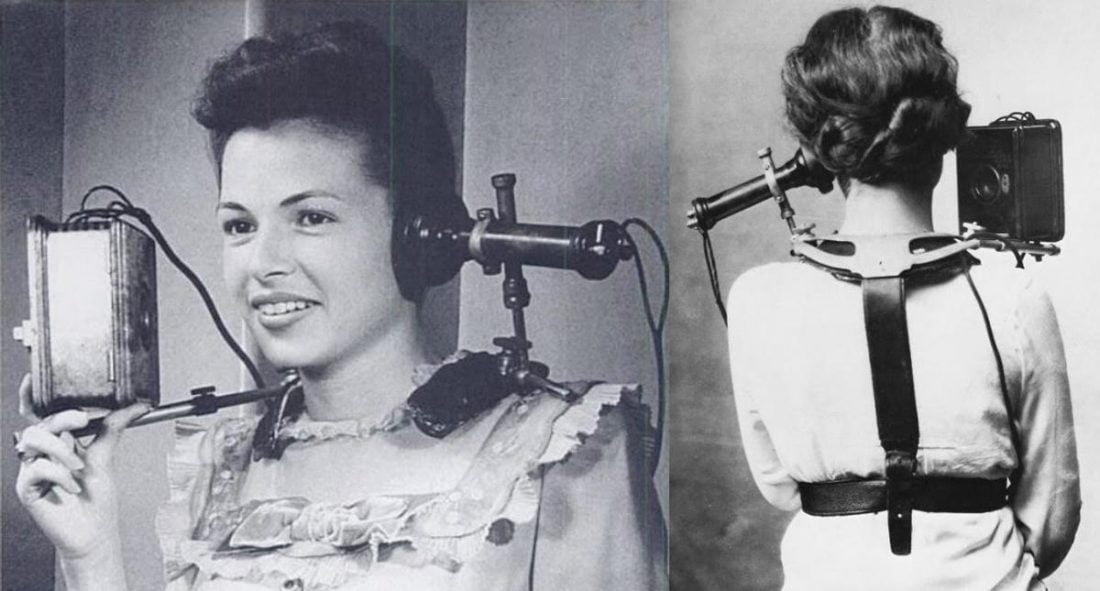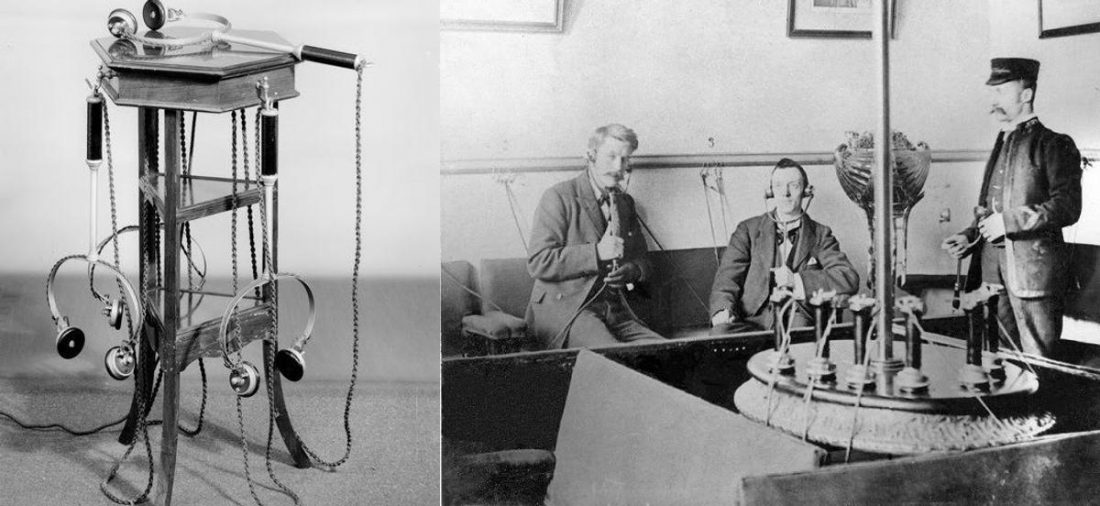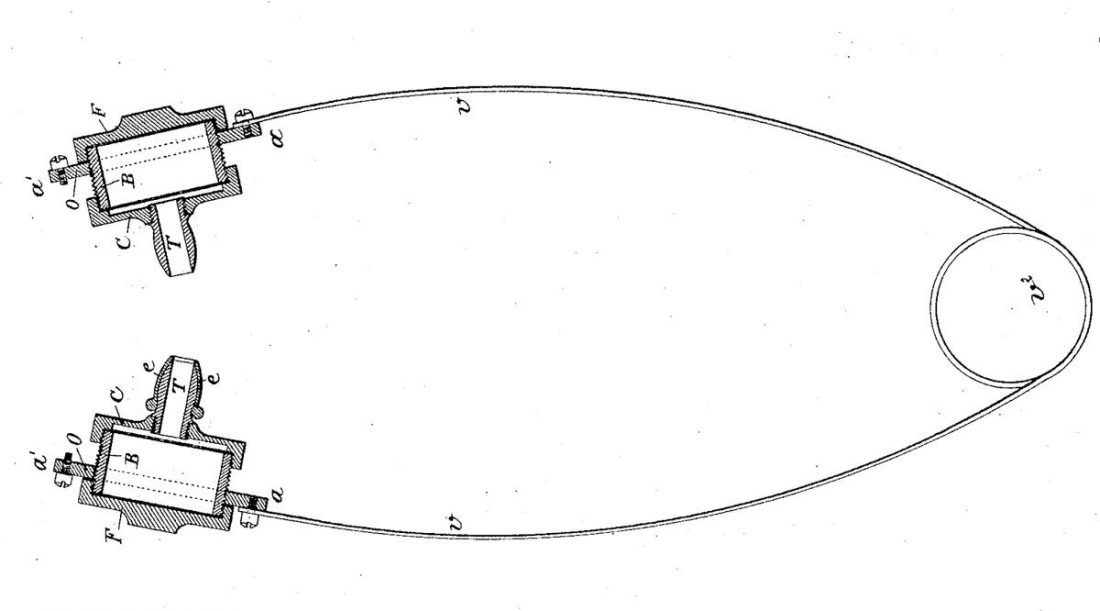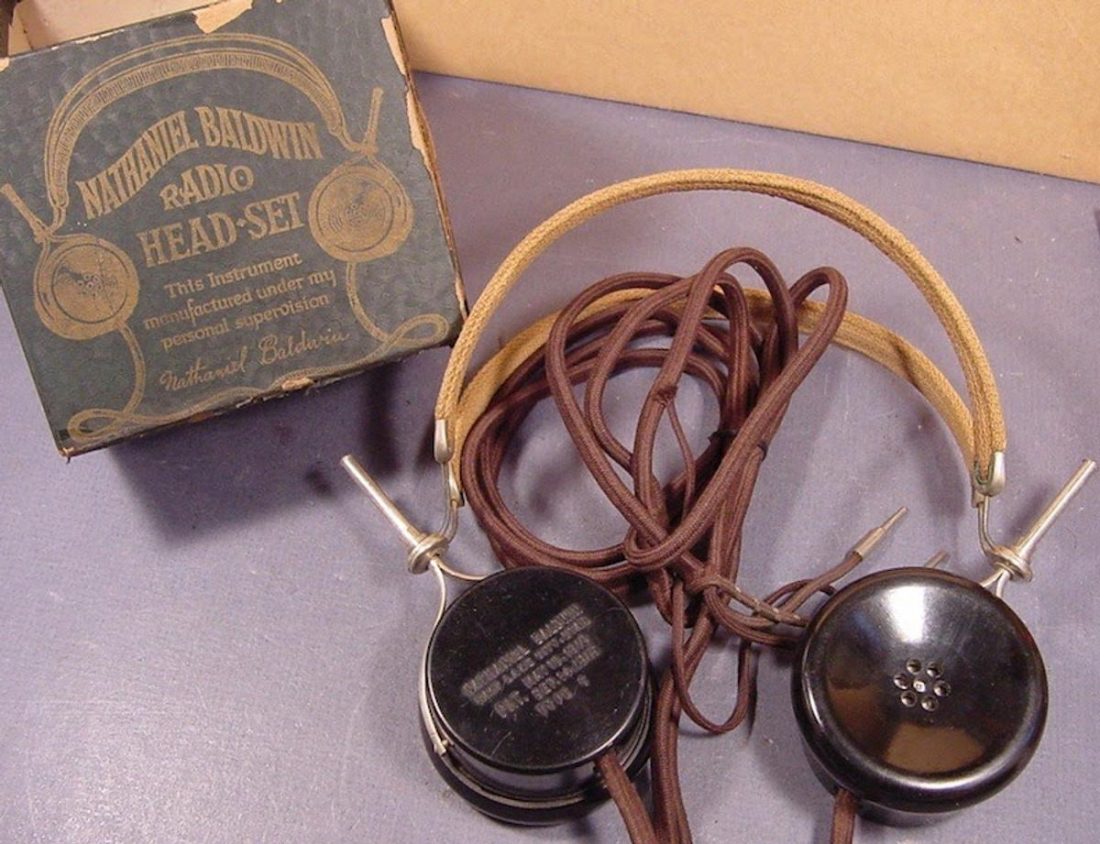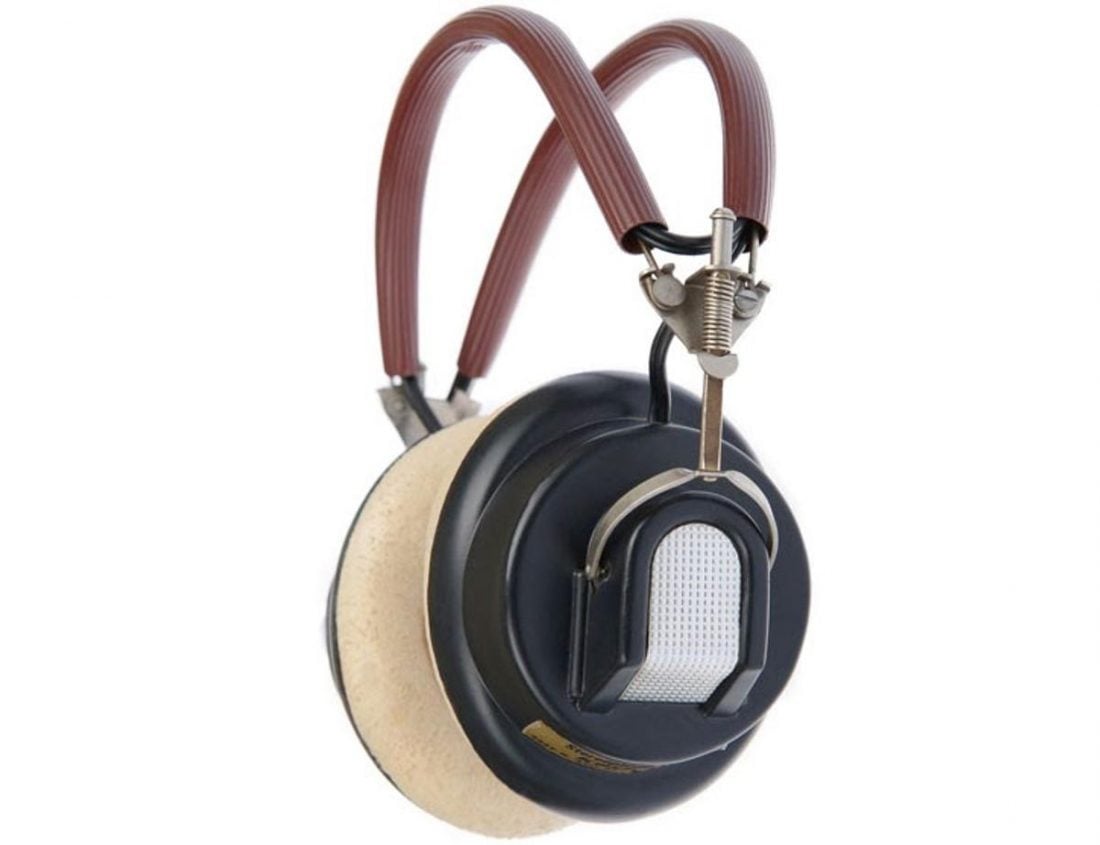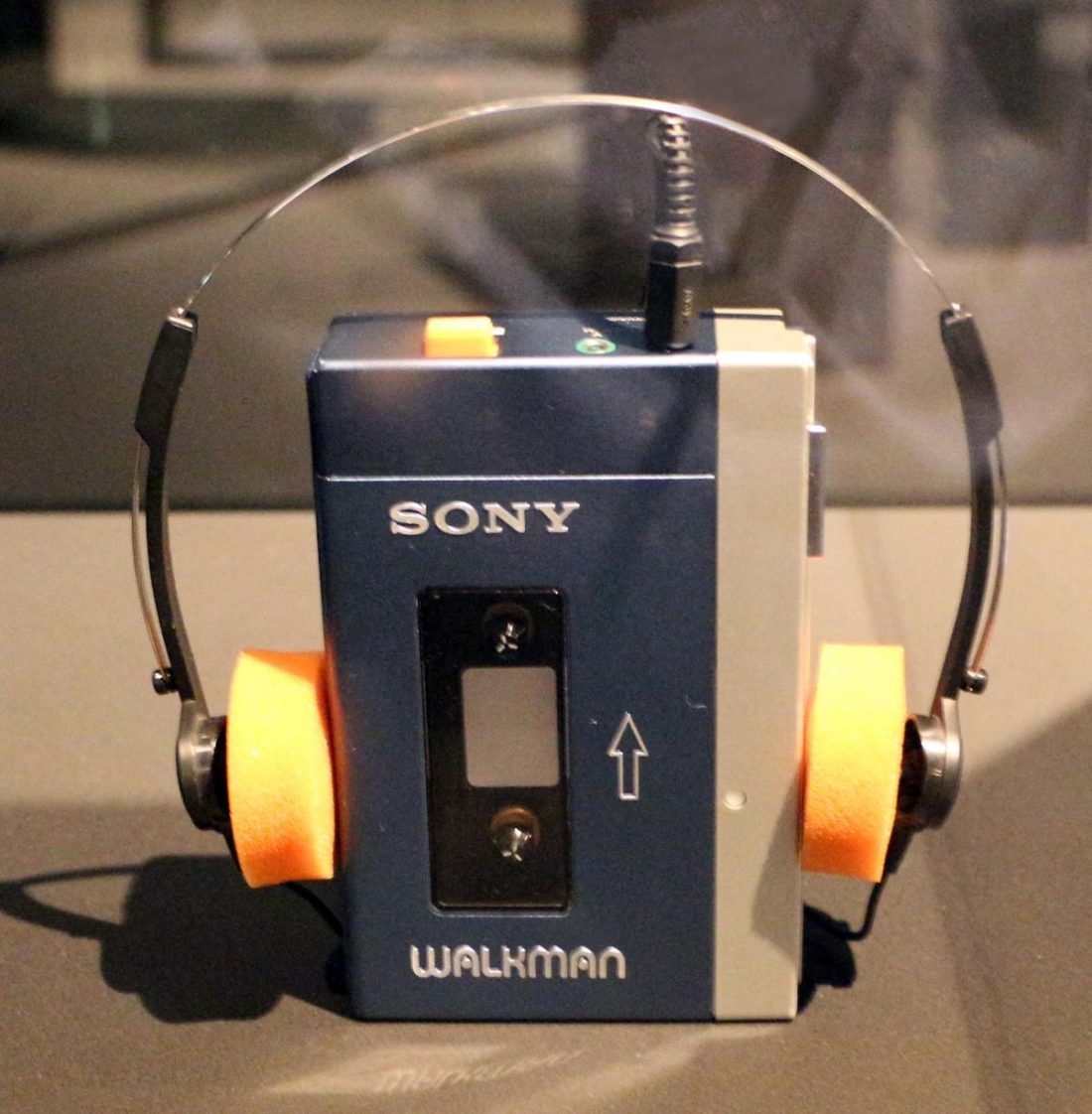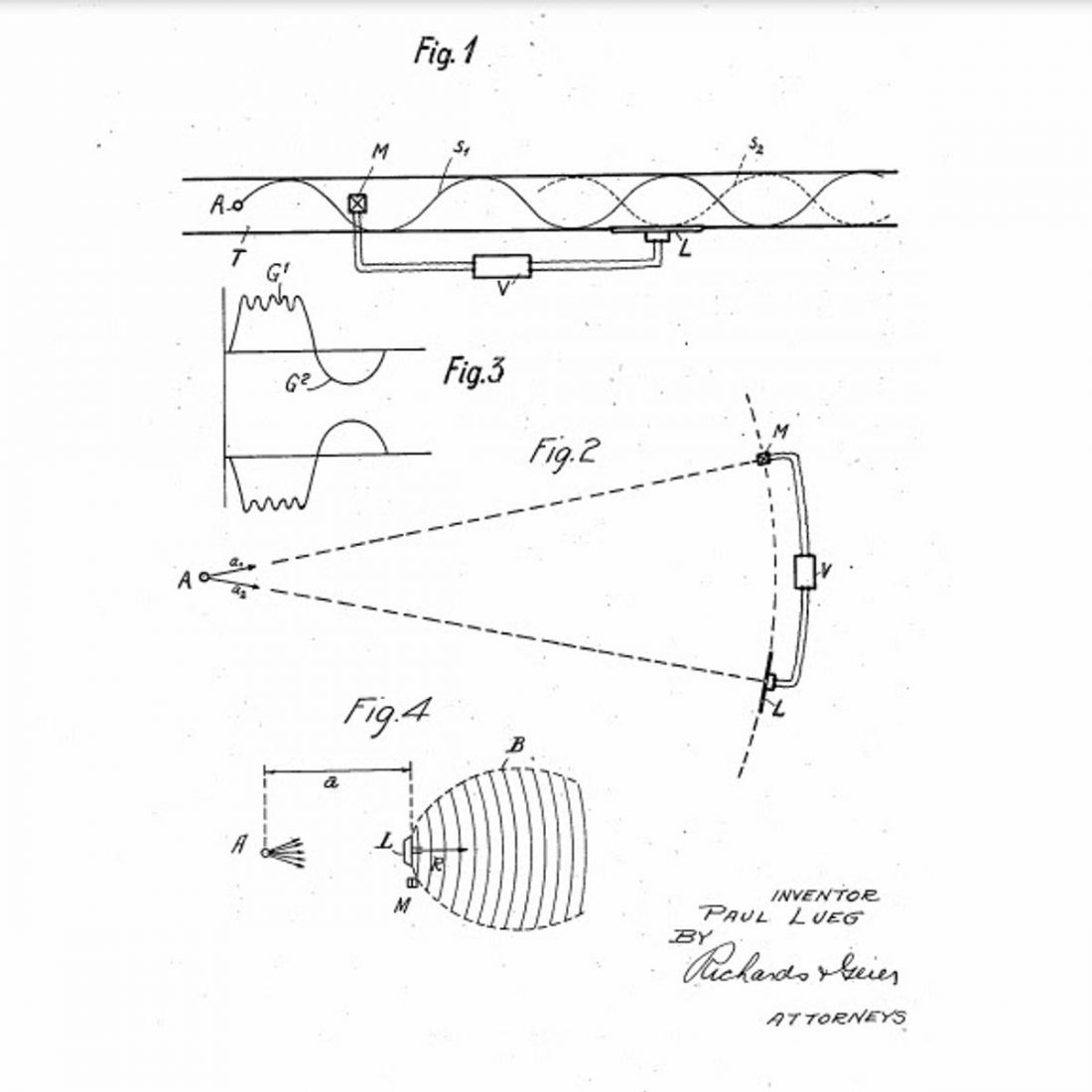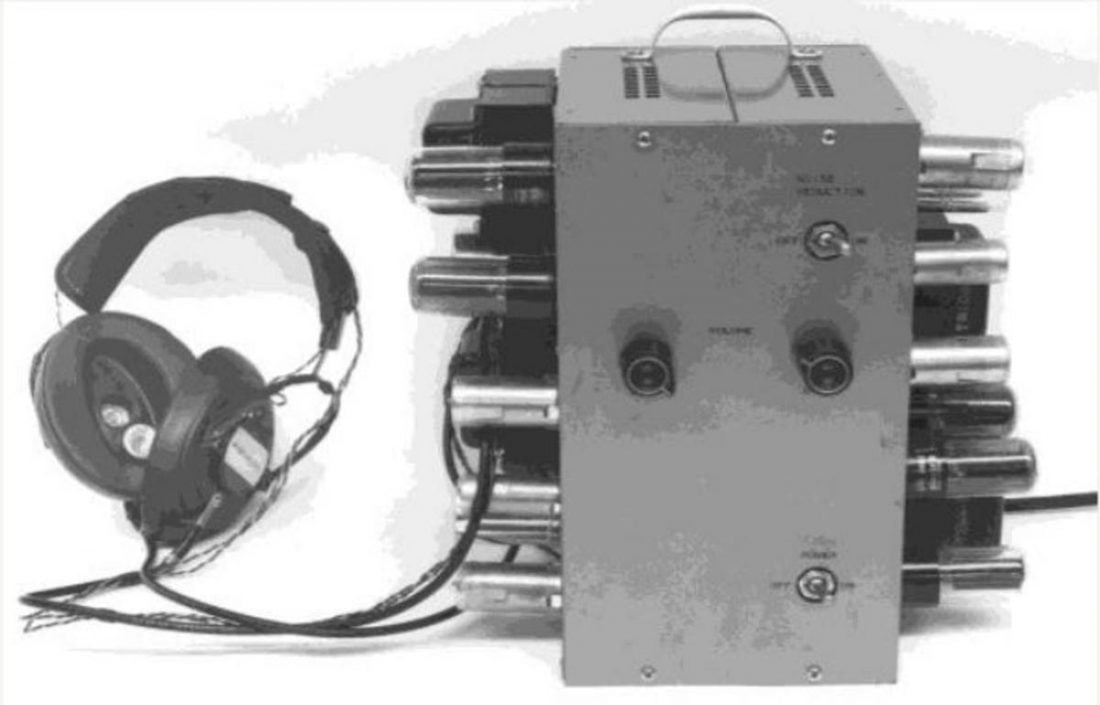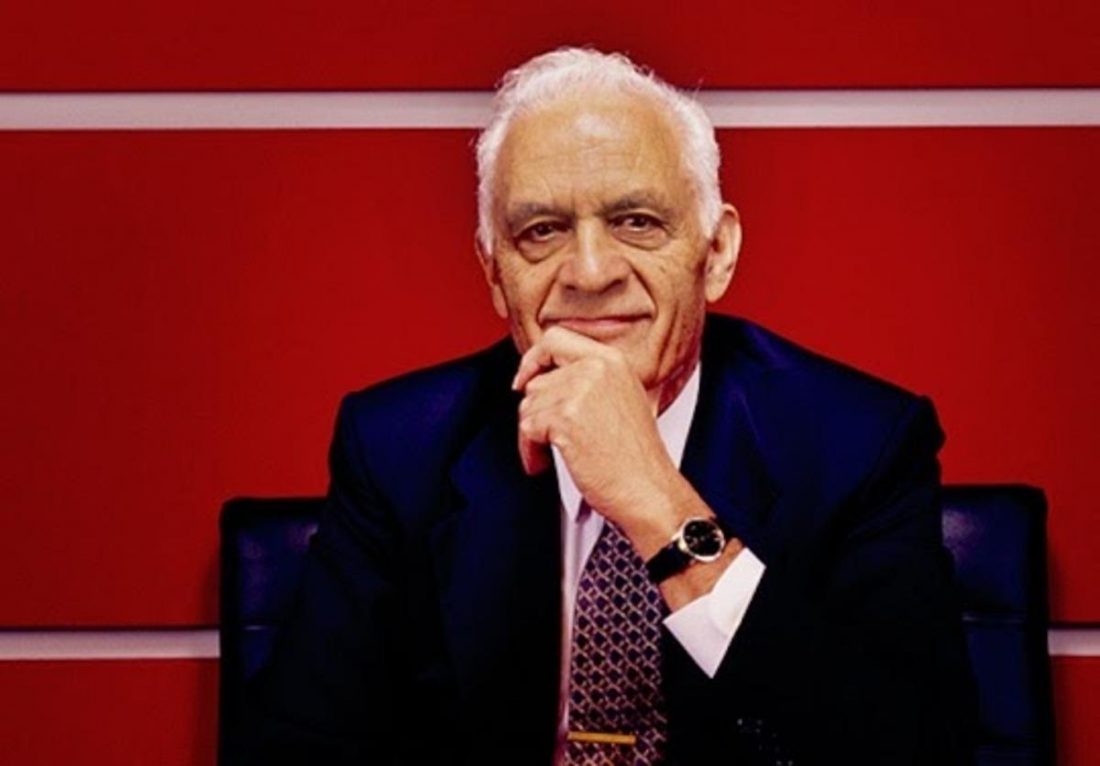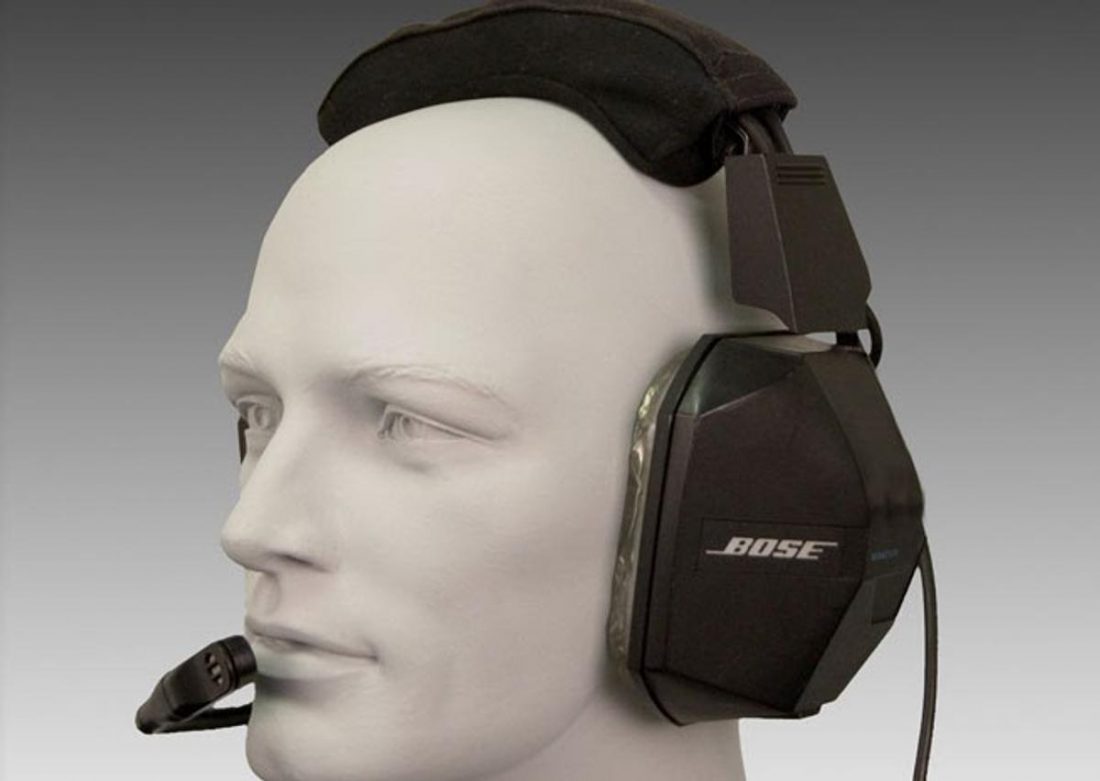Modern-day living has gotten a lot busier and noisier in recent years. With so much sound around us, it’s easy to get overwhelmed and put ourselves at risk of hearing loss. Thankfully, we have noise-cancelling headphones to protect ourselves, but this begs the question – when were noise-cancelling headphones invented? Where did this technology come from? Was it a result of years of research dedicated to solving a noise problem people hadn’t known yet, or a mere happenchance that inadvertently shaped human history and the evolution of headphones? Don’t worry, this article will answer all these questions and so much more. Here you’ll learn the rise and continual evolution of noise cancellation technology, as well as the evolution of headphones and how it found itself in the hands of the everyday consumer.
The Evolution of Headphones
Before diving into how noise-cancelling technology was made, it helps to first get a quick look at the earlier stages and evolution of headphones. The technology of headphones has gone through a dynamic evolution throughout the years, from the humble beginnings of headphones being used by telephone operators in the 1880s to Koss’ SP3 Stereophones in 1958, and the rise of Sony’s Walkman.
1880s: The 10-pound headphones
The evolution of headphones first started in the 1880s, with Ezra Gilliland designing a device consisting of a single earpiece that rested on one shoulder and a mouthpiece on the other. It also had a connecting strap that ran down the user’s back, then wrapped around the torso to help keep the device in place. These headphones were mainly used by telephone operators and were meant to improve their efficiency by providing a hands-free experience. However, with each unit weighing in at 10 pounds (about 4.5kg), it comes to no surprise why this particular design didn’t last very long.
1891: The electrophone
Invented in the United Kingdom in the 1890s, the electrophone was a subscription service that conveniently relayed live theatre performances, music hall shows, and even live sermons from churches. This subscription service went for £5 a year and started you off with two receivers, but if you wanted more then it’d cost you £1 for each additional receiver. The electrophone consisted of a pair of audio receivers attached to a headband at the end of a stick. Although the design looked similar to today’s headphones, wearing the electrophone was completely different. It was meant to be held by the handle and worn over the ears through the underside of your head, similar to how you’d wear a stethoscope. The service reached its highest peak of more than 2000 subscribers by 1923 and was able to run for more than 30 years before shutting down in 1925 due to the decline of audience interest amidst the rise of free wireless radio. Meanwhile, on the other side of the line, telephone operators used the first ever in-ear headphones by French engineer Ernest Mercadie. Just like any ordinary in-ear headphones, the receivers were meant to be inserted inside the ear canal and weighed about 50 grams. At the time, this was a great leap in technological advancement since all other headphones were large in size. Also, the receivers had rubber covers to lessen the friction inside the ear and create a seal to prevent external noise from seeping into the ear – just like how modern day silicone ear tips work.
1910: The first official audio headphones
With two sound receivers attached to an adjustable headband, these headphones made quite an advancement in terms of design and resembled the headphones we have today. Funnily enough, this device wasn’t invented in some lab or proper workstation, it was invented on Baldwin’s kitchen table in Utah in 1910 while he was trying to find a way to increase the volume of the sermons at his local Mormon temple. By using a little bit over a mile (1.6 km) of copper wire for each earcup, he was able to create a device that could receive sound without needing an external power source. You’d think that this invention easily gained popularity right off the bat, but surprisingly, several private investors originally scoffed at the idea. However, things changed quickly when the US Navy saw potential with the device that they bought about 100 headphone units to be used by their radio operators.
1958: The Koss revolution
The headphones had mini speakers which were covered in cardboard and sofa foam. These were the first headphones made purely for music listening, with people finally being able to listen to sound like they had never before. John C. Koss said it better when talking about the SP/3X, the improved successor of the SP/3: Due to Koss’ popularity and the potentially growing headphone market, these headphones sparked the birth of well-known brands such as Philips and Sennheiser. Philips made an impact in the market by providing headphones at more affordable prices, while Sennheiser made another step of innovation in the industry thanks to their HD414 headphones. The Sennheiser HD414 was the first headphone to feature a more open design. This made it a lot lighter, less bulky, and more portable in comparison to other headphones at the time, which appealed to the masses.
1979: The Walkman
In 1979, Sony released The Walkman, a new portable music player that allowed anyone to listen to music wherever they go. It featured a blue-and-silver metal case and was the world’s first low-cost personal stereo. Its success created a need for portable headphones in the market. However, the majority of people deemed Sony’s MDR-3L2 headphones as having less than desirable audio quality, allowing other headphone manufacturers to ride on Walkman’s demand for portable headphones by providing better options. The compact and portable cassette player was such a success that even Sony underestimated the number of units it would sell.
The Rise of Noise-Cancelling
Even with the ever growing popularity of headphones, none of the models at the time had the ability to cancel noise the way we know today. The technology took several decades to be developed and perfected before reaching the hands of the everyday consumer. If today one of our main problems lies in choosing between passive or active noise cancellation, back then, they didn’t have any choice at all but to bear with the noise. Before we talk about how the first noise-cancelling headphones were made, it’s worth discussing the history of how noise-cancelling technology itself came to be. The story starts with Paul Lueg, a doctor of philosophy and medicine in Germany. In 1933, he submitted a patent application about his theory and principle of active noise cancellation technology. The patent basically talks about the process of cancelling sound waves by subjecting them to opposite sound waves with the use of speakers and microphones. Unfortunately, this concept was too advanced for his time and the technology available just wasn’t able to support his theory. In the 1950s, Dr. Lawrence Jerome Fogel submitted his own patents and invented one of the first noise-cancelling headphone systems. This system was specifically designed to provide active noise cancellation to helicopter pilots by reducing the overall noise that the pilot experiences in the cockpit area to enhance and improve communication. Even though these systems were mainly used for hearing protection in aviation, the technology laid grounds for further developments down the line.
When Were Noise-Cancelling Headphones Invented?
Although Fogel technically invented noise cancellation in headphones, the kind that we know today didn’t get invented until 1989 by Dr. Amar Bose, the founder of Bose Corporation. Many know Amar Bose for his accomplishment as the founder of Bose Corporation, however, few people realize that his success was attributed to his extensive experience as a professor at the Massachusetts Institute of Technology (MIT), his knack for finding solutions, and creative imagination. It is through his imagination and problem-solving mindset that he was able to find a successful career as one of MIT’s most admired professors, while also eventually creating innovative products for the modern-day world through his company. The most notable of these products is the first noise-cancelling headphones.
From frustration to inspiration
In 1978, Bose was on a flight from Zurich to Boston and came across the first generation of new electronic headsets for in-flight entertainment. The new headsets were very light, weighing in at about less than 2 ounces (around 57 grams). In comparison, previous headphone models and traditional headsets weighed almost a pound (453.5 grams). With the flight from Zurich to Boston taking about 8 hours, Bose was excited to entertain himself using the new headsets. However, it soon became clear to him that this wasn’t possible because the cabin noise on the aircraft was so loud, that he couldn’t properly hear the music playing over the new headphones. So he took off the headphones, grabbed some paper, and started drawing up a design that would eventually turn out to be the very first noise-cancelling headphones. The very drawings he made on that flight became the main foundation and reference point for groundbreaking headphone design. When Bose finally got back to his office in Boston, he formed a team of engineers to work on the design he made. They had a working model by 1986, but it took them 15 years before they finally got to make the concept work perfectly as intended. Many people questioned and criticized Bose for his pursuit of this technology, saying that it was a waste of time and money. Regardless, he was persistent and trusted that it would work, so the research continued and eventually gave birth to the noise-cancelling headphones we’re familiar with. From helping pilots hear audio and communications more clearly by using the Bose Aviation Headset in 1989, to protecting the U.S. Army thanks to the Bose Combat Vehicle Crewman Headset in 1993, Bose’s headphones had found major success throughout the years and put its noise-cancelling headset technology in the spotlight.
What’s Next?
By today’s standards, noise cancelling headphones are now considered a commodity rather than a luxury, especially for frequent flyers. It broke free from aviation and is now almost a household name with them being available for anyone, even kids and adults alike. It has also invaded other niches like for studying, for calls, and for gaming. They have actually been so accessible in this day and age that we can add noise-reducing features to our own headphones without having any technical knowledge nor spending too much. Looking back at the first designs for noise-cancelling headphones in 1978, the noise-cancelling technology we use today isn’t all that different from before. However, major improvements and evolutionary advancements, such as wireless and digital noise cancelling technology, were made thanks to the natural evolution of digital technology. We can even already see groundbreaking features in headphones such as adaptive noise-cancelling technology and the usage of artificial intelligence for noise-cancelling in headphones. Such innovations allow noise cancelling to be safer and give a more organic listening experience. This advanced technology frees users from distraction danger, by letting certain sounds like sirens and car horns to bleed into the user’s ears, while still providing that convenient noise reduction as needed. The best applications of these advancements are more present in premium ANC headphones under $1000, but you can also find them in some mid-range ANC headphones under $200 and under $300. Those not looking for extra features aside from the needed fundamental active noise cancellation can still enjoy it from budget-friendly ANC headphones on the market. The most affordable options, however, are around $50.
Conclusion
Headphones have been an integral part of the music and communications industry for decades and will continue to do so for the foreseeable future. This article hopefully gave you an idea of how the concept of noise cancellation technology came to be, while also giving you a good background on the evolution of headphones as a whole. As the need for media consumption continues to grow alongside the rise of portable audio devices and smartphones, we can definitely expect the headphones market to continually shift and evolve with new technologies. In fact, we can already see these new developments in the best noise cancelling headphones in the market today. What do you think headphones will be like 100 years from now? Does the idea of integrating artificial intelligence with active noise cancellation technology excite you? Let us know your thoughts in the comments below!
